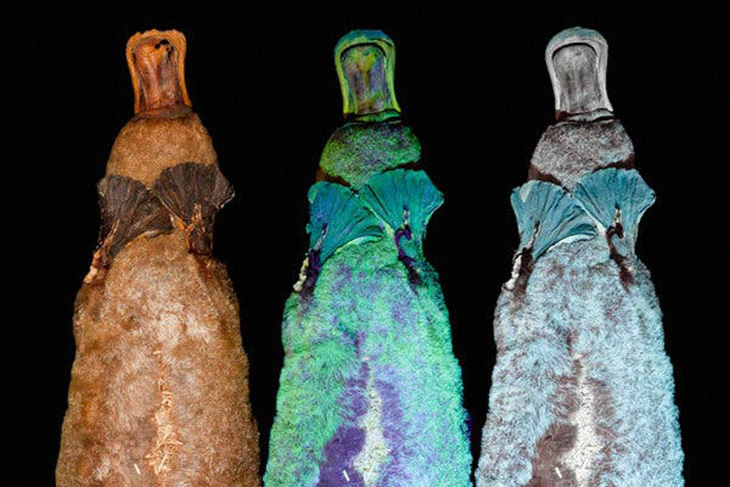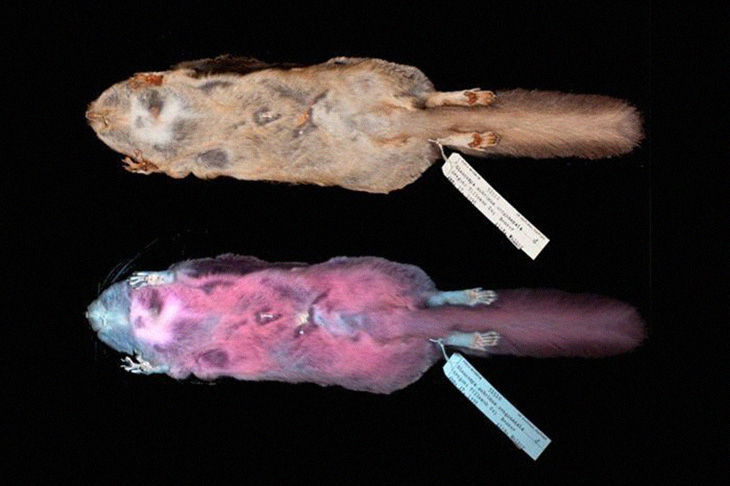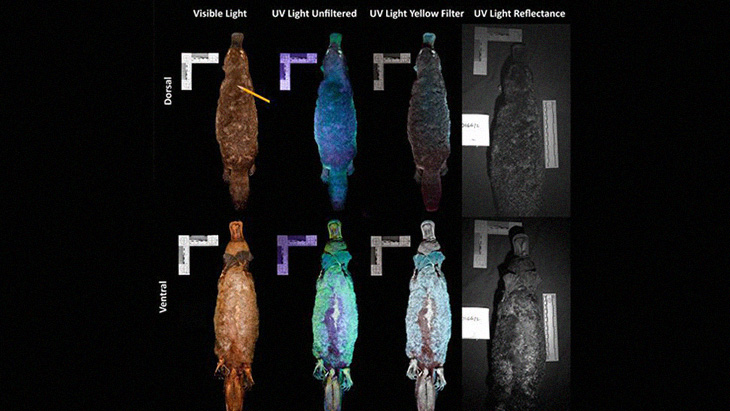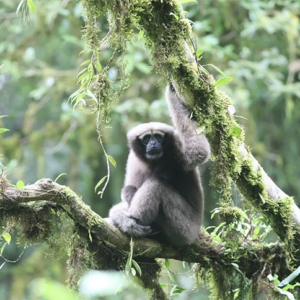
The platypus has always proven to be one of nature’s strangest yet coolest mammals that has managed to inhabit planet earth. The fact that they are mammals yet lay eggs, have webbed feet, hunt with their eyes closed, sense prey through electroreception, and have venomous spurs on their feet apparently isn’t enough to make them stand out. Now, you can add glow under ultraviolet light to the list of their incredibly unique characteristics!
In a new study published in the science journal Mammalia, it explained that platypuses can apparently glow in the dark. When they are placed underneath an ultraviolet light, these adorable creatures turn either a bright green or cerulean in color. The study was led by Paula Spaeth Anich, a biologist from the Northland College.
The research team chose to analyze three different platypuses from a museum, one female and two male specimens, from the Field Museum of Natural History in Chicago as the University of Nebraska State Museum. But figuring out that they were actually glow in the dark was by complete accident they claim. The team discovered that the platypus fur managed to absorb UV wavelengths of around 200 and 400 nanometers while managing to give off another 500 and 600 nanometers of visible light.
According to the team, they explained that with the platypuses, both the males and the one female shared the same characteristic of glowing in the dark. Yet they also caution that considering that study has yet to be peer-reviewed, as well as the sample being tiny, yet they are “confident that the fluorescence we observed is not a property of museum specimens in general.”
Incredibly, the platypus is not the only animal that actually glows in the dark. They join three other known bio-fluorescent mammals that share the same characteristic, which are the flying squirrel and the opossum. One of the study authors also shared that while they had been searching for lichens during the night, they had accidentally discovered how flying squirrels glow pink when placed under ultra-violet light.

The platypus is an animal that belongs to a particular group of mammals known as monotremes. This means that they lay eggs where their young hatch from, but they also nurse their young with milk as all mammals do.
According to the researchers from Northland College in the United States, monotremes are “an ancient mammalian lineage with a long independent evolutionary history.” Aside from making this a huge reason why they are so unique, there is research that was published back in 2018 that found that the platypus’ biochemistry showed its milk actually has a new protein which contains antibacterial properties. Scientists believe that these antibacterial properties could possibly treat antibiotic-resistant infections moving forward.
In addition, the research team also thinks that platypuses “and possibly others developed biofluorescence to adapt to low light conditions,” which they believe allows them to see each other as they move around in the dark.
“UV absorbance and fluorescence may be particularly important to mammals,” they write.
According to the lead author, Professor Anich, “It was a mix of serendipity and curiosity that led us to shine a UV light on the platypuses at the Field Museum.”
She added, “But we were also interested in seeing how deep in the mammalian tree that trait of biofluorescent fur went. It’s though that monotremes branched off the marsupial-placental lineage more than 150 million years ago. So, it was intriguing to see that animals that were such distant relatives also had biofluorescent fur.”

Lead author Anich has said in a press release that “it was intriguing to see that animals that were such distant relatives also had bio-fluorescent fur.” They even ended their paper with another related question, “Is bio-fluorescence an ancestral mammalian trait?”
After discovering that the platypus is yet another animal that glows in the dark, the team hopes to find out whether it’s one characteristic that’s more common in mammals, considering that it’s actually common in amphibians, reptiles and fungi, so who knows what other species they’ll discover glowing under a UV light in the not so distant future?
What are your thoughts? Please comment below and share this news!
True Activist / Report a typo


